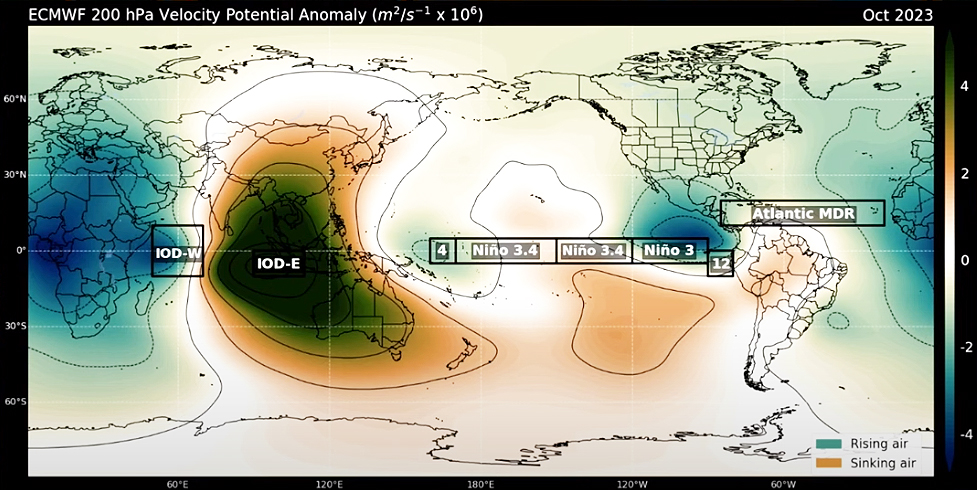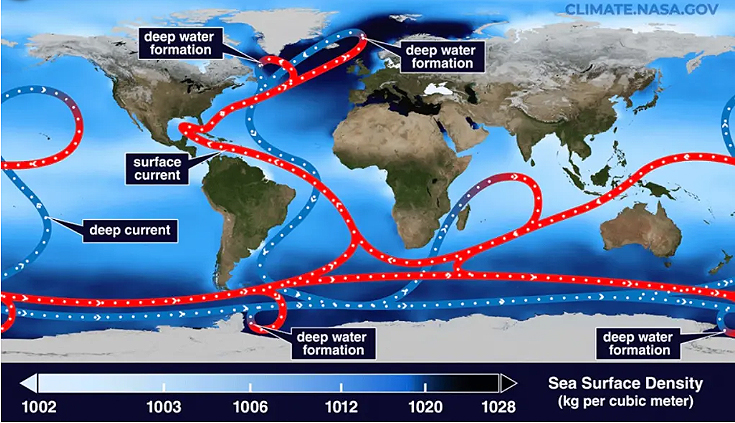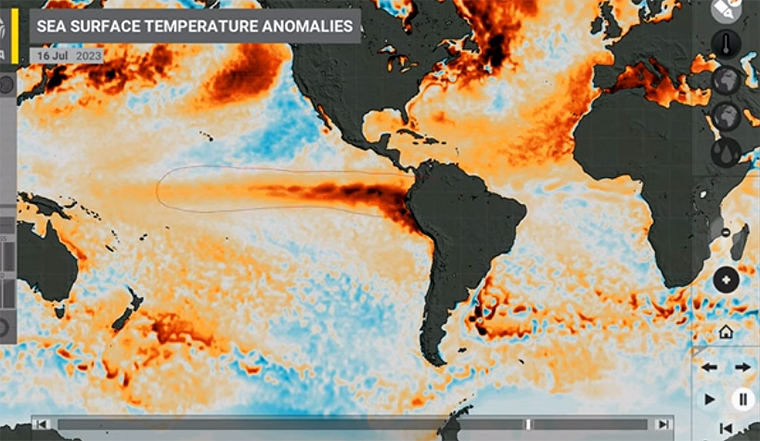
The latest NIWA release of their seasonal climate update for August through to the end of October has come as a poignant reminder of the critical aspect weather has to play on the farming calendar.
They (and others) have been consistent in warning that a strong El Niño is on its way and while it may be later in making its presence felt than earlier forecasted, it is coming. Most farmers in most regions will know what it means; Southland and Westland get more rain with the more consistent westerly winds while eastern and Northern regions are drier (perhaps considerably).
The reduced rainfall will be compounded by the westerly winds (quite strong winds seem to be a distinct possibility) plus of course it will be warmer. Listening to the report it appears that the potential is there to give spring temperature records a nudge.
The El Niño effect takes much of the warmer water from the western Pacific over to the west (where it normally has a disastrous effect on farming on western South America. This time NIWA have shown a temperature anomaly driven by the Indian Ocean off the west coast of Australia (see map below) which creates the conditions which drag heat from over Australia and extend it over New Zealand.

Source: NIWA
The map above is modelling what they expect to see in October. They made the comment that the last time a similar alignment and strength of weather patterns like this was seen in the spring was in 2019. That wasn’t a great year for many in the farming fraternity. The piece below is taken from the January 2020 NIWA recap of the 2019 spring.
“Yearly rainfall in 2019 was below normal (50-79% of normal) across Northland, Auckland, the Bay of Plenty as well as parts of Waikato, Hawke’s Bay, the Wairarapa and Marlborough. Conversely, rainfall was above normal (120-149% of normal) in western Southland and parts of Westland. Rainfall was near normal (80-119% of normal) for the remainder of New Zealand”.
Along with the heat and westerlies the anomaly also blocks of the tropical stream that has persisted over the last couple of seasons dragging heavy rainfall down from up past New Caledonia. This part may be considered a plus, perhaps. Depending how bad, if indeed it does eventuate, a drought becomes. At this stage it is one of those times where I’m glad we have a small holding as it could be a season when the larger the property the greater the problem.
If the forecasts for New Zealand weren’t concerning enough the news recently that the Gulf Stream is potentially going to shut down sounds infinitely worse. The Gulf Stream circulation is driven by the currents of colder more heavily laden with salt water in the North Atlantic in particular sinking creating an ocean wide current. This driver is the Atlantic meridional overturning circulation (AMOC) which helps to distribute heat and coolness around the planet.

Source: NY Post (NASA/Goddard Space Flight Center Scientific Visualization Studio)
The map below shows the temperature anomalies (the El Niño heat spot is clearly shown on the coast of South America) and in in particular the heating around Greenland which is warming and increasing the melt of the Greenland ice cap and putting the circulation current into a more dormant phase.

Source: NIWA
The research has indicated that while the event may take place as early as 2025 it could also take right to the end of the century before the collapse occurs. If and when (the science community seems pretty unanimous it is a 'when' not an 'if') the collapse does occur then the impact on the globe (apart from what else is occurring) will be to wind and weather patterns becoming yet more erratic, but the most extreme changes will be to Nordic and other Northern European countries which rely on the “stream’ to provide them with more moderate temperatures taking the extremes out of winter.
If the ‘collapse’ does happen a climate more similar to Alaska would occur. And while talk of an ice age seems somewhat implausible that is what modelling and history (from 1,600 years ago) show, at least for the Northern Hemisphere.
The Pacific Ocean, which does have the Humboldt Current, would not be impacted as severely as the Northern Atlantic, and New Zealand even less so. For most people this will be an academic discussion due mostly because there is little they can do about and secondly because of the breadth of the time predictions. Not a reason to ignore such predictions but not enough reason to lose anymore sleep than what is currently occurring under increasing climate change.
On a brighter note, when it does occur New Zealand may get more demand for its primary products. We just hope they are in a position to pay for them.
7 Comments
Hopefully they are better at predicting this type of weather event. Need to get rid of the climate alarmists in NIWA. If its up to ACT or National I'm sure they'll prune the alarmists out based on a review that Labour has or is going to initiate between NIWA and the Met office.
The Gulf Stream circulation is driven by the currents of colder more heavily laden with salt water in the North Atlantic in particular sinking creating an ocean wide current.
This is a mis-leading statement. The gulf stream is driven by the earths rotation. AMOC merely assists this. Its AMOC that might collapse. Climate Change Won't Stop The Gulf Stream. Here's Why. The potential collapse of AMOC is another example of the media promoting climate change hysteria. See this expert reaction to paper warning of a collapse of the Atlantic meridional overturning circulation.
About a year ago I pointed out the risk of the Gulf Stream/Humboldt current stalling. We may feel smug about this in NZ but as I pointed out, the consequence will be that La Niña conditions will prevail. We need to consider how we will cope with near permanent weather similar to that which has caused all our recent weather disasters.
Having said all that, there seems to be a flaw in all that logic. As described, if the Humboldt current stalls, there is a tendency for the North Atlantic to go into ice age conditions. Surely if that happens, the ice will stop melting and preserve the Humboldt current. I.e the systems are more complex and a negative feedback loop may apply.




We welcome your comments below. If you are not already registered, please register to comment.
Remember we welcome robust, respectful and insightful debate. We don't welcome abusive or defamatory comments and will de-register those repeatedly making such comments. Our current comment policy is here.